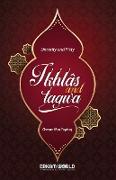The Sergestidæ of the Siboga Expedition (Classic Reprint)
BücherAngebote / Angebote:
Excerpt from The Sergestidæ of the Siboga ExpeditionTh'e: Copulatory organs, the petasma, much be dealt with at length. In '1913 K. Stephensen (the copulatory Organ (petasma) of Sergestes mgz'lax (stimps.) H. J. H., in: Mindeskrift for Steenstrup, 1913) showed that the petasma begins to be visible in the Masizi gopus-stage and has a gradual development, he gives six figures to illustrate the development and makes some remarks on them, but he did not undertake a more close comparative invest igation. For the rest, already in 1896 I had pronounced (op. Cit.) that the petasma itself does not become completely developed at once to its final shape. But when stephensen. Writes. As may be seen the petasma varies very much with the age, and thus may not be used as a specific character this conclusion is extremely wrong. In the order Euphausiacea the copul atory organs, to which also the not very necessary name petasma could be applied, show a gradual development, but while it in the adult specimens is of extreme importance for the separation of species and zimmer, tattersall and others have followed me as to this nearly fundamental question I have as a rule not taken into account the lobes and processes in not full-grown males, and at least in its earlier stages the petasma is too little developed. And the state of things is the same in Sergesles. But in order to obtain good and practical results it is necessary to adopt an appropriate plan as to the petasma in adult specimens and to carry through a nomenclature for its essential elements. According to my experience from the'euphau siacea, I think that the left organ ought as far as possible to be chosen, when the animal is seen from below consequently the petasma on the side turning to the right. This organ is cut off, laid on a glass-plate in glycerine diluted with water, cautiously spread as far as possible by the aid of two minute knifes, then a small glass-cover is applied in such a way that the organ is not much pressed, and the organ is then drawn, consequently from behind (from below). Furthermore the distal portion of its median and most important, ramified part ought to be drawn with a higher degree of enlargement both from behind and, after the organ has been turned, from 'in front. When each petasma of several species has been drawn with its lobes turning upwards on the paper in the way described, the organs are easily compared and the differences affording specific characters catch the eye. The right organ is completely symmetrical With the left, but the latter ought to be preferred. It may be added that when one has made himself acquainted with the petasma in a few species or when he has a number of satisfactory figures at hand, he may as a rule find it unnecessary to remove the petasma from any male in order to use it for determination, as the examination with a good pocket-lens will be sufficient.About the PublisherForgotten Books publishes hundreds of thousands of rare and classic books. Find more at www.forgottenbooks.comThis book is a reproduction of an important historical work. Forgotten Books uses state-of-the-art technology to digitally reconstruct the work, preserving the original format whilst repairing imperfections present in the aged copy. In rare cases, an imperfection in the original, such as a blemish or missing page, may be replicated in our edition. We do, however, repair the vast majority of imperfections successfully, any imperfections that remain are intentionally left to preserve the state of such historical works.
Folgt in ca. 5 Arbeitstagen




